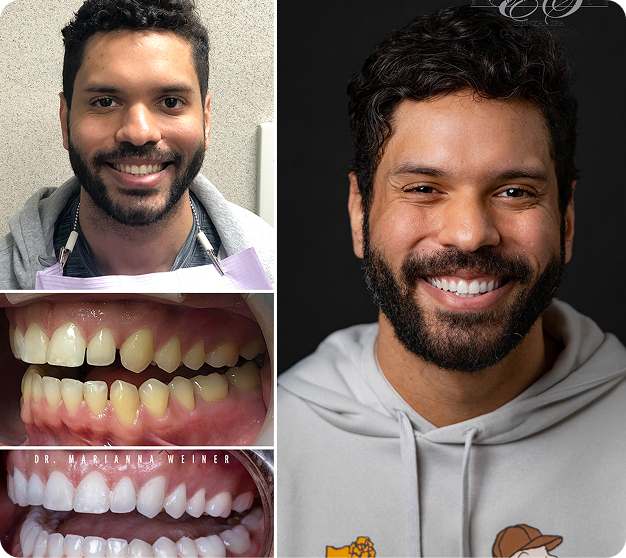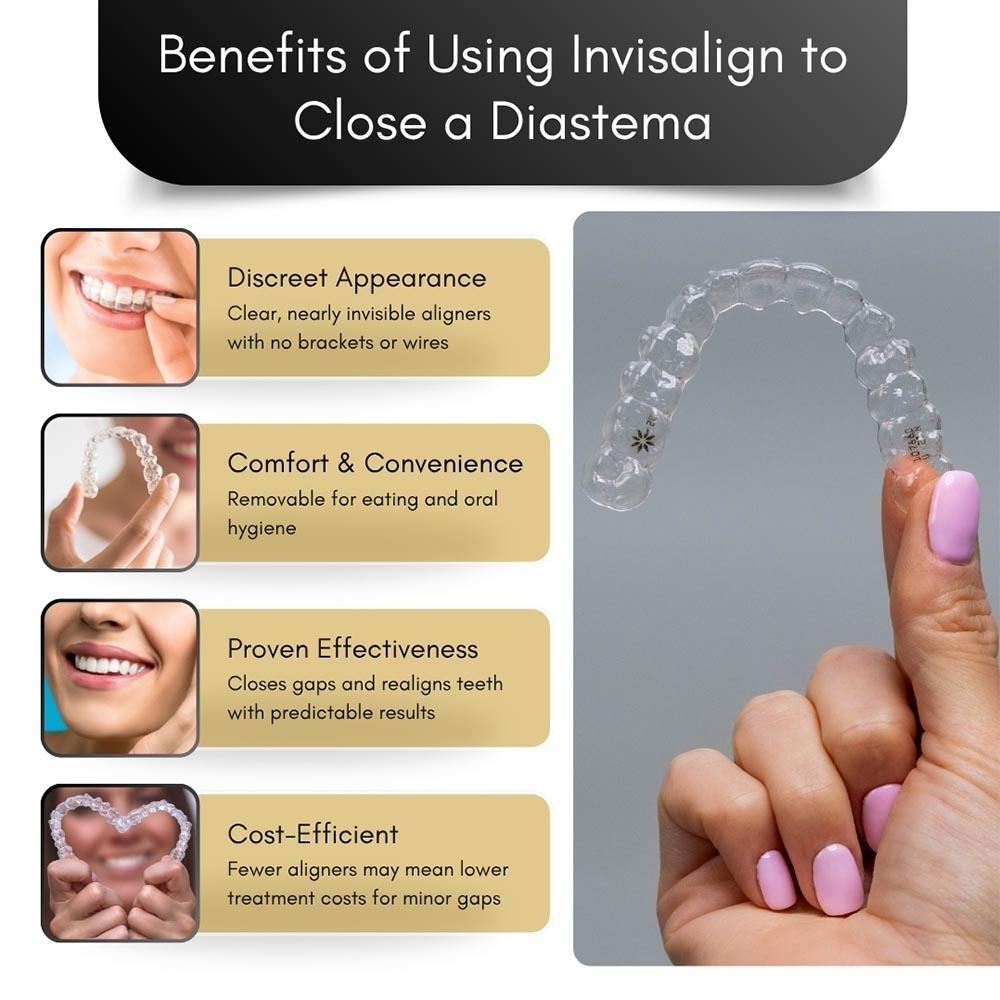What Is Invisalign?
Instead of fixed braces, Invisalign uses clear plastic aligners to move teeth into the correct positions, correcting problems like gaps between teeth. It is an easy and effective system with minimal impact on everyday life.
In this article, you will learn more about gaps between your teeth, what causes them, and what could happen if you don’t fix them. We also look at how Invisalign can help.
What Are Dental Gaps?
Ideally, your teeth should be in contact with each other, creating a seamless smile. When there is a gap between teeth, it’s called a diastema. Gaps or diastemas can occur anywhere in the mouth but are more noticeable when they affect your front teeth.
A diastema can affect children and adults. Some children will find the gap closes when their adult teeth appear, but other times, it can still be visible. The size of the gap can vary considerably. A small gap may not be much of a concern, and you may regard it as an expression of your personality. Other times, it may cause problems.
What Can Cause Gaps Between Teeth?
Several factors can cause gaps between teeth, including the following.
- Teeth that are too small for the size of your jawbone can lead to the formation of gaps.
- If your parents or siblings have gaps between their teeth, the chances are you will, too.
- An enlarged labial frenum can cause your upper front teeth to separate. The frenum is the piece of tissue connecting your lips to your gums.
- Oral habits like thumb sucking or tongue thrusting can cause a diastema. The habit pulls the upper front teeth outward and elongates the upper jaw.
- Dental problems like gum disease can loosen teeth and result in bone loss. As teeth move, they can separate, causing gaps.

Should I Fix Gaps Between My Teeth?
This depends on whether the gaps are causing problems or if the issue is merely aesthetic. For example, if you like having a gap between your front teeth, you may not wish to close it, and there might not be any need to do so.
A diastema can cause problems if it acts like a food trap. Sometimes, food can become impacted in these gaps. Trapped food can increase your risk of problems like tooth decay and gum disease. Continually having food stuck between your teeth can also be uncomfortable and annoying.
How Can Invisalign Work for Gaps?
Invisalign can treat many problems, including closing or minimizing spaces between teeth. 3-D imaging creates a custom treatment plan for you, showing how a diastema can be successfully treated.
If your gaps are due to dental problems like gum disease, these issues must be treated first. Invisalign can only be used to move strong, healthy teeth. Invisalign is also effective for treating other uneven bite problems that may contribute to tooth gaps.
- Invisalign for Overbite
- Invisalign for Crossbite
- Invisalign for Crowded Teeth
- Invisalign for Underbite
- Invisalign for Open Bite
What Our Patients Are Saying
What Happens if Invisalign Cannot Close a Gap Entirely?
If a gap is especially large, it may not be possible to close it completely with Invisalign. For example, if a gap is 6 mm or more, minimizing the space may only be possible.
However, once the gap size is minimized, you might be able to close it entirely with porcelain crowns or veneers. You may be much happier just having a small gap and wish to leave it.
Invisalign Treatment Process for Gaps
The steps for treating gaps between your teeth are as follows.
- When you see our Brooklyn Invisalign Center provider for an initial consultation, they can scan your teeth, creating a 3-D digital model.
- Invisalign software creates your treatment plan, gradually correcting problems like gaps between your teeth.
- You get to view the digital images created by the software to see how your gaps will close or reduce in size and how your smile is predicted to look at the end of treatment.
- Once you approve your treatment plan, we will create your custom aligners, and you can begin to wear them.
- You must wear the aligners almost continuously. They must be worn for at least 20 to 22 hours daily to be effective. We would prefer you only remove them for oral care and mealtimes.
- After approximately two weeks, you change out each set of aligners to continue moving your teeth in small increments.
- Regular checkups allow us to monitor your progress and are generally only required every 6 to 8 weeks. These checkups are quick because there are no brackets or wires to adjust.
How Long Will Treatment Take?
When you see our Invisalign provider, they can give you a more accurate timeline based on the size of the gap and any other problems requiring correction. Small gaps can be quite easy to correct quickly.
You may only require a few aligners if the problem is cosmetically oriented. Treatment will take longer if you have other orthodontic issues you wish to correct, perhaps affecting your bite.
Benefits of Using Invisalign to Close a Diastema
Invisalign treatment can provide some significant benefits when closing gaps between your teeth.
- Aesthetic advantages. Invisalign aligners are smooth, clear, and virtually invisible. There are no brackets or wires.
- Comfort and convenience. You can take the aligners out for meals and oral care, so the impact on everyday life is minimal.
- Effectiveness. Invisalign provides predictable results and can close gaps and realign your teeth effectively.
- Cost-effectiveness. Invisalign can be extremely cost-effective as the price is based on the number of aligners needed. Therefore, smaller aesthetic problems can be corrected more quickly and cheaply.

Comparison of Invisalign and Other Orthodontic Appliances
- Invisalign vs Breezy Braces
- Invisalign vs SureSmile
- Invisalign vs Clear Braces
- Invisalign vs Traditional Braces
Related Articles
- Invisalign FAQ’s
- Invisalign Alternatives
- Invisalign Candidate
- Invisalign for Front Teeth Protrusion
- Invisalign for TMJ
- Invisalign Teen
- Invisalign Teeth Straightening
- Orthodontic Retainers
Invisalign can treat numerous problems and can be especially good for closing gaps between teeth. Treatment is discreet, effective, and has little impact on everyday activities. You get to see virtual images of the predicted results, so you can easily see if you wish to proceed with this treatment. If you have any questions about Invisalign, call our Invisalign office at (718) 375-3757.

